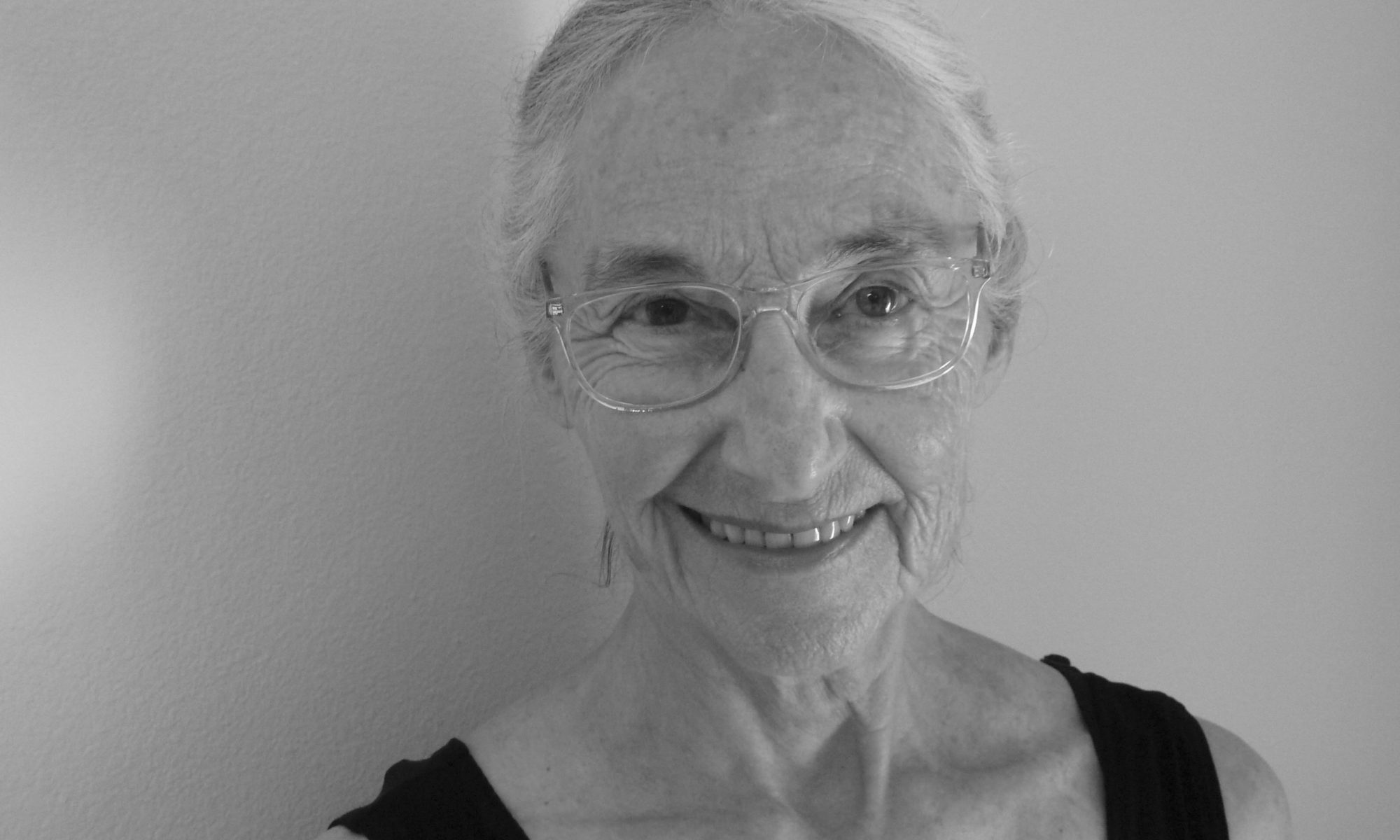I’m typing case notes in the hospice office when one of the home care nurses walks up and sings, “The son’s gonna come in to-mor-row.”
I chuckle-groan. Sons from out of town haven’t been around to experience the patient’s decline, so they can’t understand the decisions made by caregivers who have been. Sons from out of town, whether they are conscious of it or not, believe they can swoop in for a few days and fix whatever’s wrong. Sons from out of town, poor guys, are a pain to educate.
***
The next day, I ring the doorbell at the patient’s house. The son opens the door, walks out and closes it behind him. He crosses his arms over his chest and frowns down at me. “I’m taking Mom off hospice.”
Here we go. I keep my face and tone of voice neutral. “What does your mother say about that?”
He scoffs. “You’ve got her so doped up she doesn’t know what she’s saying. I’m doing what’s best for her.”
I try a sympathetic smile. “I know it’s hard to see your mom like this, but as long as she’s mentally competent, she has the legal right to make her own decisions.”
“It’s for her own good.”
The temperature is in the triple digits. I wish we could do this inside. “I understand you have her best interests at heart, but the law says two doctors have to agree she’s not competent before her health care power of attorney can take over her decision-making. And that’s your sister. Besides, would you want to put your mom through all that?”
He takes a step forward. I get ready to dodge. I probably won’t need to, but it’s best to prepare for the worst. He says, “You don’t know what you’re talking about.”
Why is it that ignorance and arrogance so often occur together?
Facts aren’t working, so I default to empathy. “If I’m hearing you right, you’re worried about the drugs we’re giving her.”
He spreads his arms wide and thrusts his face toward me. “Yes! She’s getting addicted!”
And there it is.
***
In my years of hospice work, dozens of patients have told me, “I’m not afraid of dying. I’m afraid of suffering.”
Death can be beautiful, but it is never pretty. And it’s always painful. As the natural dying process goes on, there’s more and more pain, and patients need higher and higher doses of morphine to ease it. But hospice patients don’t get addicted. Even if they did (which I repeat, they don’t), what would it matter? The dead don’t need drugs to be at peace.
But we as a society are so afraid of addiction that families cannot understand it isn’t an issue for the dying. That stems from an inability to accept the coming death. Humans can only take reality in small doses, especially when we are about to lose someone we can’t bear to be without. Even people who believe in an afterlife sometimes doubt when they’re face-to-face with the possibility of final separation.
Because morphine and the end of people’s lives coincide, families often ask to have the patient taken off it during the final days of active dying. They say, “The morphine is killing him.”
When that happens, it’s the hospice staff’s unpleasant task to confront them with hard truths. “The (cancer, congestive heart failure, stroke, etc.) is killing him,” we say. “The choice you have to make is whether he dies in comfort or in pain. We can take him off the morphine, but do you really want to increase his suffering during his last days?” Families most often continue the morphine, but some have to see the consequences of removing it before they understand how necessary it is.
***
As a former substance abuse counselor and recovering alcoholic with almost fourteen years of sobriety—which could vanish in an instant, in any instant—I can say with authority that I understand addiction. In my opinion, addiction happens more because of emotional pain than because someone develops a physical tolerance for a medication. Until the past few years, the medical establishment has done a good job of ensuring that treatment of bodily pain doesn’t result in addiction. But emotional pain is often ignored because its disabling power is not well-understood.
If you scratch the surface of any person you pass on the street, you will find sorrow, regret, guilt, shame, self-doubt, loneliness, and a pantheon of other woundedness. Not to mention scars from traumatic experiences. To be human is to carry tragedy in our hearts.
While effective treatments exist to deal with emotional pain—talk therapy, support groups, and psychiatric medications, among others—there is a stigma attached to people who admit they need that kind of help. Having emotional problems or an imbalance of brain chemicals is still often seen as a defect of character, a moral failing, weakness. And no one wants to be called crazy.
Drugs and alcohol can distract us from our emotional pain, for a moment. So can food, sex, and work. But that distraction, that “high,” is hard to maintain. The more people use their drug or activity of choice, the more they need to use it to get the same effect, until they have to use very large amounts just to be as miserable as they started out. And their emotional pain is right there waiting for them. This is why so many people become addicted to multiple substances or activities. For example, my parents had to drink two pots of coffee and smoke a pack of cigarettes just to make it out the door in the morning.
According to the Centers for Disease Control and Prevention (CDC), addiction to nicotine kills 480,000 people a year in this country.1 The CDC also reports that pregnant women who smoke give birth to more premature babies, more infants with low birth weight, more with weak lungs, and their babies are more prone than others to sudden infant death syndrome (SIDS).2 But, in my opinion, society doesn’t regard smokers as addicts because tobacco products are legal.
What would we learn if someone compared the number of deaths in this country caused by legal substances to the number of deaths caused by illegal substances?
Caffeine keeps the economy running. It makes it possible for us to put one foot in front of the other as we do things we don’t enjoy, in places we don’t want to be, with companions we had no say in choosing, five days a week.
According to a study by the Kuakini Medical Center research center in Honolulu, 90% of Americans consume caffeine regularly.3 Their study calls caffeine this country’s most popular drug. Even though people build up a tolerance for caffeine and experience withdrawal from it, experts differ on whether it can be classified as addictive. Evidence supporting that it is: the combination of caffeine and sugar has built a Starbucks on almost every street corner in the United States.
Because part of my stomach is paralyzed, I had to give up both caffeine and sugar. For me, it was harder to stop using caffeine than alcohol. Sugar was harder than both of those. Most of us know that sugar isn’t good for us, but we don’t think of ourselves as addicted.
Everyone’s addicted to something.
So it’s no wonder that when opioids became easy to get, people lined up for them. Without effective oversight, widespread addiction was inevitable. As I write this in early 2019, the United States is suffering an epidemic of deaths from opioid overdose.
What is it about the human race that compels us to monetize, and/or weaponize, every good thing?
***
As a species, humans are addicted to black-and-white thinking. We want things to be simple. We want things to stay the same. Good/evil, male/female, strength/weakness, patriotism/treason. We don’t, don’t, don’t want to consider multiple possibilities for these or anything else.
To experience this, just try to get people to vary the way they do their jobs. I’m willing to bet money that most of them won’t be able to see over the sides of the rut they’ve dug for themselves.
Ruts are comfortable. Ruts don’t require thinking. Ruts give us the illusion that the world is under control. Ruts make us feel safe.
Thinking about things in depth leads to uncertainty, which is the opposite of feeling safe.
***
Modern hospice care traces its roots to Dr. Cicely Saunders, who opened the first hospice in England in 1967.4 Her strategy—using multiple disciplines to treat the physical, psychological, and spiritual problems dying people encounter—proved so successful that other medical specialties adopted it. As better treatments for incurable diseases reduced the number of deaths and increased the number of patients living with chronic pain, acceptance of “palliative care” grew. Medical professionals began to focus on the dignity, integrity, and quality of life of people with ongoing, long-term pain. The modern Palliative Care Movement was born.
The World Health Organization (WHO) began researching palliative care in the 1980s. In 1990, it published a paper recognizing it as a necessary part of patient treatment, and it became more possible for people worldwide to get adequate pain control without having to prove they were going to die soon.5
Which brings me to the final addiction I want to talk about: the addiction to the idea of cure. Cure is often only a fantasy. The more wedded people are to this fantasy, the more the patients involved suffer.
According to the National Hospice Organization, in 2017, 27.8% of Medicare-funded hospice patients were on service for seven days or less.6 That includes the people who had the misfortune to die in the ambulance on the way from the hospital to the inpatient unit. The reason that percentage is so large is that so many patients and family members are addicted to the hope for a cure. They can’t let go of it. And they fear “giving up,” as though their mental attitude can control survival.
Not that mental attitude means nothing. I have often seen patients hang on until that last person comes and says goodbye, then draw their final breath as soon as that goodbye is over. In our hospice about half the people who died on our inpatient unit waited until they were alone to die.
***
The out-of-town son, Jackson, extends his stay as long as he can. He stays awake to watch over his mother at night, so his sister can get some sleep. I give him resources on overnight caregivers for after he leaves.
I ring the doorbell. Jackson answers and steps back to let me in. His head hangs heavy into his slumped shoulders. His skin is pale except for the purplish darkness around his eyes.
“You look exhausted.”
“Ya think? I’m making coffee. Want some?”
I shake my head. “I’ll look in on your mom.”
“We’ll be in the kitchen.”
The smell of active dying—a combination of concentrated urine and the acetone-like odor of dying cells—is an invisible fog in the unlit room. The odor and I are not friends, but we are longtime companions.
The patient’s hospital bed is set up in the living room so she can still feel like a part of the family’s life, and so she can see the Catalina Mountains out the picture window. Today, the curtains on the windows are closed.
I bend over the bed and touch her hand. “Hello, Cathy, it’s Peggy. Do you feel like talking?” Without opening her eyes, she moves her head one slow trip left, right, center. I squeeze and release her emaciated hand. “I’ll go talk to your kids, see if I can help them out in any way.” The corners of Cathy’s mouth turn up a little, and drop again.
The kitchen has a fog, as well—cigarette smoke. I sit at the table with Jackson and his sister, Treacy. No one speaks for a minute.
“Your mom’s very weak now,” I say.
They look at me with eyes that don’t want to know.
“It might not be long,” I add.
Treacy goes to the counter and pours more coffee. She stays there with her back turned.
Jackson clears his throat. “Will dying hurt?”
I know he has already asked the nurse the same question. And the nurse’s aide. And the chaplain. I give the same answer we always do. “Helping people be comfortable all the way to the end is the thing hospice does best.”
He rubs his hands across his face. “Yeah. Thank God.”
Treacy’s sob is so quiet it couldn’t be heard anywhere that was not a place of vigil.
After a respectful pause, I say, “What’s happening with hiring caregivers?”
***
Three days later, Cathy dies a pain-free death with her children by her side.
After the nurse pronounces the death, she and I clean Cathy’s body and re-dress her, so the children can say a last goodbye before the funeral home van comes. After that, the R.N. collects the several forms of opiate Cathy took during her time in hospice and takes them to the hospital for disposal. On her way out the door, Jackson gives her an awkward one-armed hug. He says, “Thanks for not letting her suffer.”
***
The overdose epidemic is not okay. We need to do something about it. But. I’m afraid humanity’s desire for simple solutions to complex problems will rocket us back to the days when non-hospice patients were denied pain control. I worry that our fears will overwhelm our capacity for empathy. I fear the return of preventable physical suffering, and I weep for the helpless patients who will be forced to endure it.
Reference List:
- Fast facts and fact sheets: smoking and tobacco use. Centers for Disease Control and Prevention. https://www.cdc.gov/tobacco/data_statistics/fact_sheets/fast_facts/index.htm. Updated February 6, 2019. Accessed September 11, 2019.
- Substance use during pregnancy. Centers for Disease Control and Prevention. https://www.cdc.gov/reproductivehealth/maternalinfanthealth/substance-abuse/substance-abuse-during-pregnancy.htm. Updated July 24, 2019. Accessed September 11, 2019.
- Caffeine: America’s most popular drug. Kuakini Health System. https://www.kuakini.org/wps/portal/public/Health-Wellness/Health-Info-Tips/Miscellaneous/Caffeine–America-s-Most-Popular-Drug. Updated 2019. Accessed September 11, 2019.
- Clark, D. Cicely Saunders and her early associates: a kaleidoscope of effects. In: To Comfort Always: A History of Palliative Medicine since the Nineteenth Century. Oxford, England: Oxford University Press; 2016:1-33. doi:10.1093/med/9780199674282.001.0001. Accessed September 12, 2019.
- Cancer pain relief and palliative care: report of a WHO expert committee (meeting held in Geneva from 3 to 10 July 1989). World Health Organization. http://apps.who.int/iris/handle/10665/39524. Published January 1, 1990. Accessed September 14, 2019.
- National Hospice and Palliative Care Organization (NHPCO) facts and figures: 2018 edition. NHPCO. https://www.nhpco.org/wp-content/uploads/2019/07/2018_NHPCO_Facts_Figures.pdf. Updated July 2, 2019. Accessed September 21, 2019.



